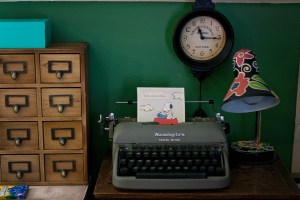
On Valentine’s Eve, my husband surprised me with tickets to Abbey Road LIVE! a Beatle’s cover band playing in Nashville. Overall, the audience was young, but all together we belted out those half-century old lyrics. It took me right back to 1965 when I saw “The Beatles Show” during their second U.S. tour. I can still envision my eight-year-old self in the balcony, screaming and raising my hands when Paul and John waved at my sister and me after singing “I Want to Hold Your Hand” . . .
Unfortunately our “experiencing selves” cannot accurately archive the stories our “remembering selves” tell and retell. Thanks to the internet, I’ve discovered that they didn’t even sing their first #1 hit, and that the $5 matinee and evening shows included a dozen songs lasting only 35 minutes. Yes, it’s been proven that our emotional archives are much richer than our mental ones (you can listen here http://youtu.be/awFqISIeNtE).
If we can’t trust our memories, how can we pass them down to others more accurately?
Preserve the essentials. Rewinding much farther (1757), consider Robert Robinson, the twenty-two year old pastor and hymnist who wrote about his new found faith in Christ: “Come thou Fount of every blessing, tune my heart to sing thy grace; streams of mercy never ceasing, call for songs of loudest praise.” After more than 250 years, most arrangements have dropped one critical section of the original text:
“Here I raise mine Ebenezer; hither by thy help I’m come; and I hope, by thy good pleasure, safely to arrive at home. Jesus sought me when a stranger, wandering from the fold of God; He, to rescue me from danger, interposed his precious blood.”
Raise my . . . what? It’s understandable why most modern hymnals and artists like Jars of Clay and Michael Card have changed those obscure words to: “Hitherto thy love has blessed me, Thou has brought me to this place; And I know Thy hand will bring me safely home by Thy good grace.” (E. Margaret Clarkson’s adaptation first deleted this valuable biblical concept for post-modern followers of Christ in 1973).
Recognize where your trust lies. From childhood, God had raised up a faithful priest who did according to what was in His heart and mind. Israel went out in battle against the Philistines at Ebenezer. When they were defeated badly the elders brought the Ark of the Covenant there, believing “it [the ark] may come among us and save us from the power of our enemies.” (1 Samuel 4:3). Not only were they defeated again, but the Philistines captured the ark of God. Things didn’t go well for the Philistines either, and it only took them seven months to return the ark “with a guilt offering that would adequately give glory to the God of Israel” (1 Samuel 6). For Israel, it took twenty years and a lot more suffering to finally return to the Lord for help. How have you seen this pattern play out in your life or career?
Depend on God alone. When Samuel saw that they were serious about returning to God as their lone source of deliverance, he told them to first put away everything else in which they had put their confidence. Afterward he prayed for them continuously, and the Lord answered by“thundering with a mighty sound . . . and threw the Philistines into confusion so they were defeated before Israel.” (1 Samuel 7) That must have been a life changing and unforgettable experience! Looking back, what things have you tried out to make things turn out the way you want? How have you seen the Lord fight for you?
Commemorate the notable. “Then Samuel took a stone and set it up between Mizpah and Shen and called its name Ebenezer [stone of help]; for he said, ‘Till now the LORD has helped us.” (1 Samuel 7:12). Samuel discerned the limits of the human memory and chose a great stone, stood it up on the battlefield and named it “Ebenezer” as a perpetual reminder of God’s victory as well as all their self-inflicted failures. Tracing the last two or three decades, can you see how the Lord has helped you even when you didn’t ask? Even when you went the other way?
Look back but move forward. Ask God to point you to tangible objects that will serve as visible “Ebenezers” of His mercy and grace toward you. A compass, a sand clock, a magnifying glass, a ring, a charm bracelet . . . At the end of January, I found a miniature bench to keep on my desk as a reminder that God has waited with me through some long, hard decisions. If God has helped us “until now” we can expect that He will also help us today.
Ebenezers not only build your own faith, but cultivate expectation and provide conversation starters for sharing our stories of how the Gospel directs our past, present and future. What internal or external “battles” are you facing at this moment? Jesus welcomes your prayers and will act for you out of his loving purposes for you and the world.
Dear Jesus, You did everything needed to make a way for me to come to you and for everything I need in life. The Bible traces your purposes as well as your compassion, so it’s my unbelief and pride in my own strength that are behind so many failures in my life. Thank you for coming to me, through the stories of two friends who related their new found faith in You. Give me fresh ways to pass them on to my friends, my children and my grandchildren. Amen.
“Praise is a form of sanity where you suspend thought of the future and dwell in the eternal now, lifting up God as the center.” Jack Miller, Saving Grace












 Elaine Everett 1968 “Most Improved Player”
Elaine Everett 1968 “Most Improved Player”


